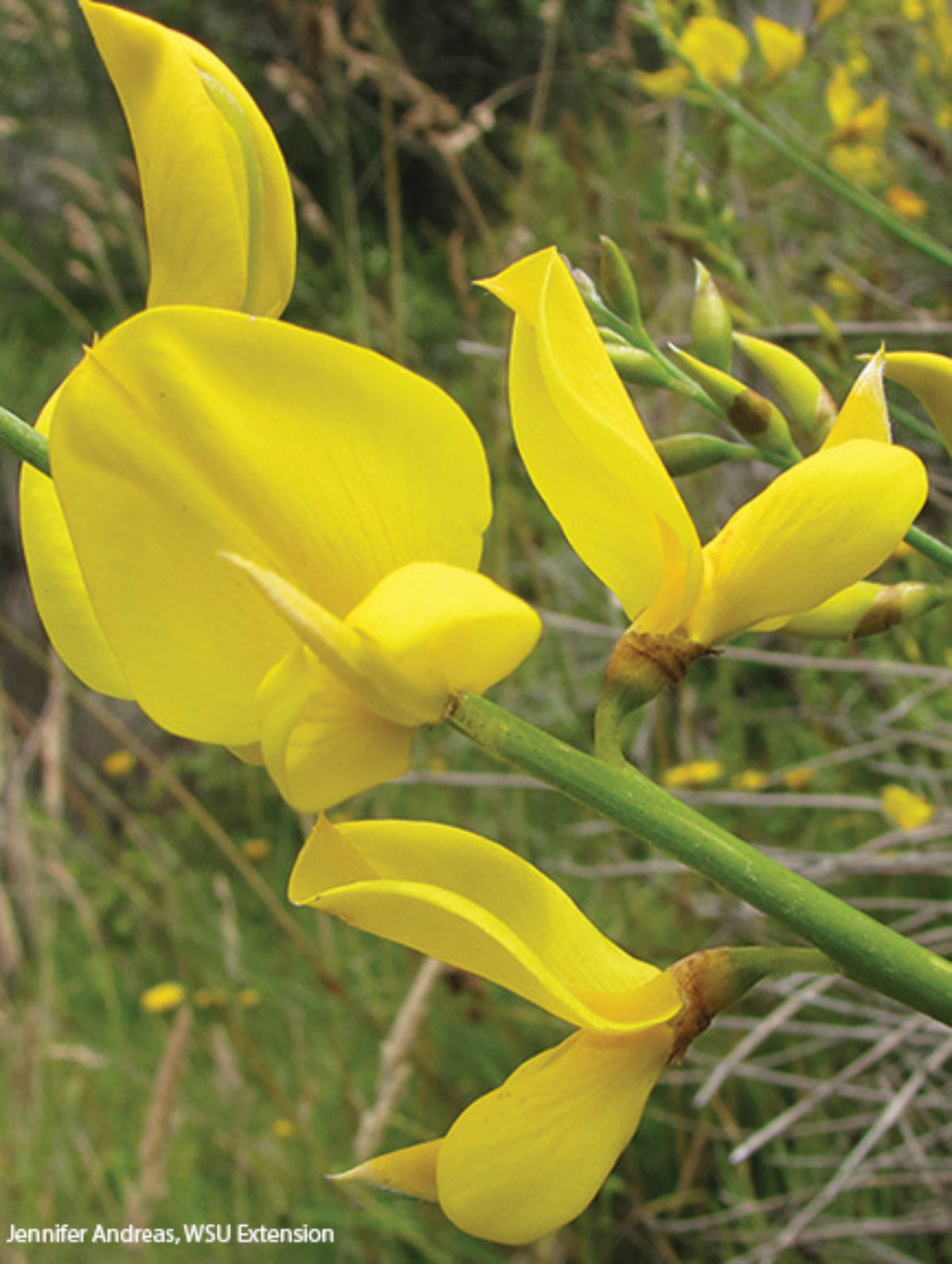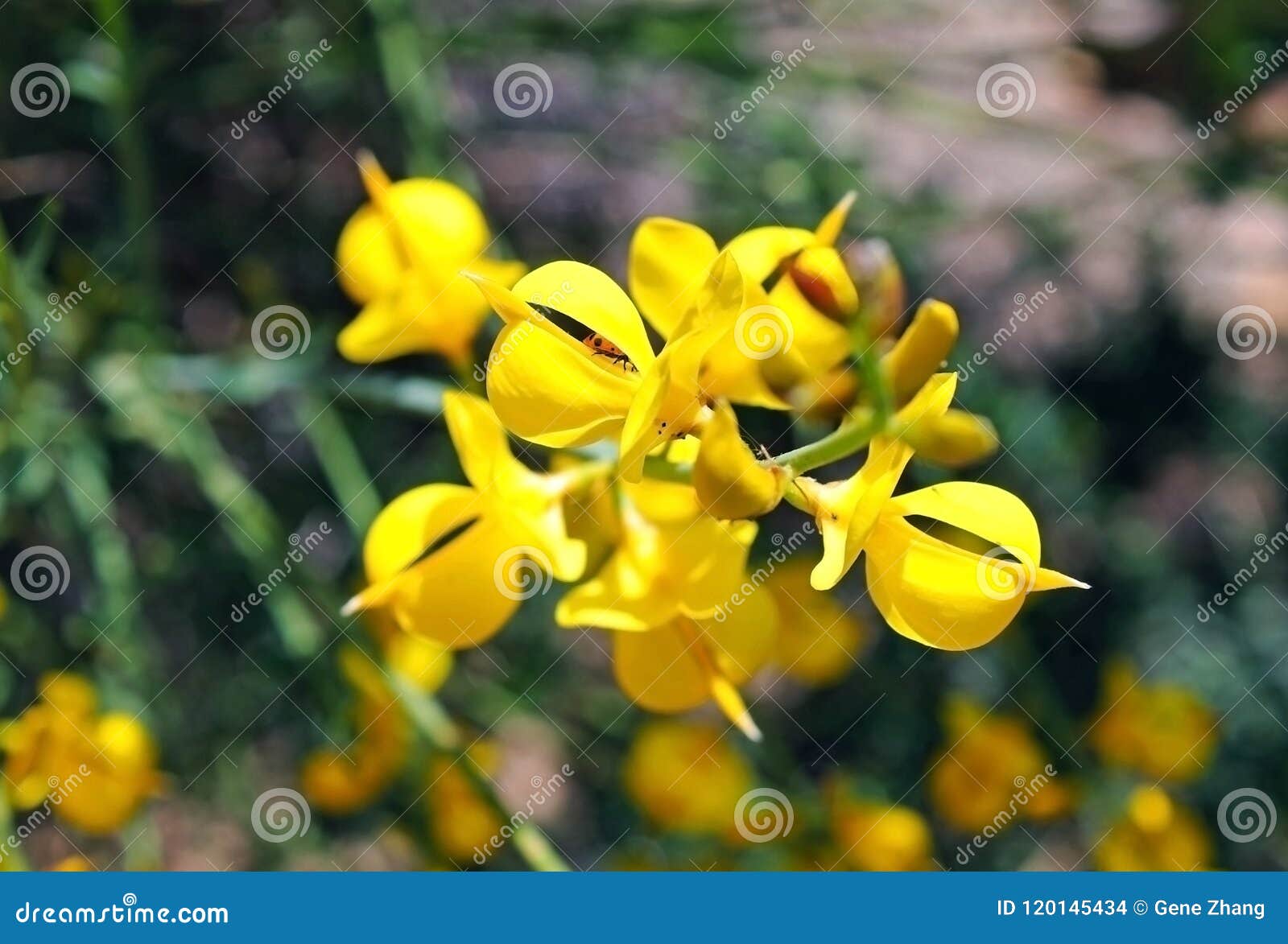

Some similarities to : Broom ( Cytisus scoparius) but that belongs in a differing genus (still within the same Fabaceae family). Sometimes in opposite pairs, mainly by chance rather than design. The leaves are short (1-3cm), narrow (4mm), linear or oblanceolate.

With photosynthesis occurring mostly in the stems the plant is able to conserve water in hot climates, which probably also explains the pith within the stems to hold the water. The stems of Spanish Broom have a wide pith within (unfortunately your Author did not know this when he was taking all these photos). The few leaves on it eventually fall off in late spring which explains why your Author could only find one or two leaves on the larger plants.

Most of the photosynthesis occurs within the stiff stems of the plant, with the leaves contributing little. The only leaves on the plant are always much nearer the ground never trefoil as are many other Fabaceae. They are glaucous green with tiny white hairs, which might rub off those parts higher up the plant when buffeted by high winds. All are rigid and straight forming a very architectural space. The stems are sometimes well-branched, coming off the main stem at an angle of about 60°. Some pods have already fallen off (the pale-brown stumps on the stem). There might eventually be 18-22 (?) in each pod. The developing peas/seeds can be discerned in the top half of the pod.

Yellow spanish broom crack#
The pods eventually grow to 8-10cm long and blacken when ripe, bursting open with a crack to scatter the seeds. All pods are directed upwards on stiff stalks, rather than hang down as they do on many other fabaceae plants. On this specimen the keel is splitting at the bottom, no longer joined, which will, of course, sink the canoe :-)Įventually the petals wither off and the ovary grows into a long, thin straight-edged pod. The single pale-green style and 10(?) concolorous yellow filaments both curl up from the open canoe-shaped keel. The canoe-shaped keel protrudes beyond the two wings. Flowers on a short stalk encased in fused sepal which has no gaps between it and the flower it holds the flowers nearer the bottom escaping first.įlowers large, mainly a deep yellow (deeper yellow than Broom) typically fabaceae shaped with a large banner, two wings and a keel.īut whereas the keel on many other Fabaceae plants usually comprises two clasping halves and are mostly hidden between the two wings, those on Spanish Broom are canoe-shaped (fused at the bottom but open at the top) and extend way-beyond the two wings held apart either side. The stems are mostly featureless, with very faint ridges and tiny white pin-pricks (possibly very short hairs). The flower spike might have about 20(?) potential flowers, here in bud stage. The flowering spike, a raceme, occupies the top. The stems are thin, rigid, mainly straight with just a gentle overall curve on them and sparsely branched. scattered mostly around London, but elsewhere occurs in a few isolated hectads mainly on the west half of England. Likes a sandy soil by roadsides or rough ground. SPANISH BROOM Spartium junceum Pea Family Ĩth July 2017, park garden, Waterloo, Sefton Coast Broom (Spanish) / Spanish Broom - Wild Flower Finder


 0 kommentar(er)
0 kommentar(er)
